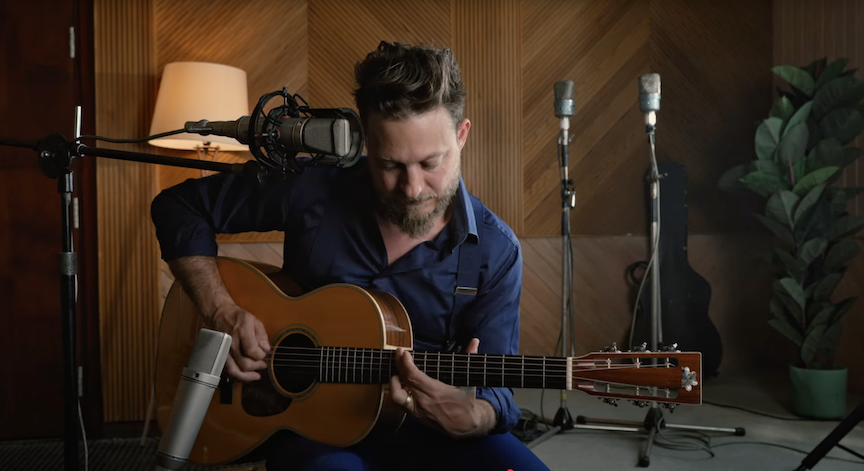2013 Mario DeSio Baritone
Peghead Nation’s Teja Gerken demonstrates his personal baritone guitar.
I first met Mario DeSio at San Francisco’s Bazaar Café in the early 2000s. This was before he’d started building guitars, splitting his time between being a singer-songwriter and a building contractor. Having learned that I was the host of a monthly fingerstyle guitar showcase at the venue and that I knew about instruments, he started asking me for advice on guitars he was buying and selling on eBay, and one day, he announced that he was going to start building. Starting out with electrics, Mario eventually began building acoustics, including some great-sounding slope-shoulder dreadnoughts. From the start, Mario’s guitars ended up in the hands of his songwriter friends, and before long, local performers such as Deborah Crooks, Shelley Doty, David Gans, Jeff Pehrson, Maurice Tani, and others were playing DeSio instruments. Around 2012, Mario felt that he was ready to venture beyond his songwriter community, but he still felt that his guitars needed a little push, so he offered to build a few guitars for friends who might have more direct input and feedback on his work. This was when I got the call that Mario wanted to build me a guitar. Since I was very happy with the standard six-strings I played, I asked him whether he’d be up for building me a baritone guitar, which I’d never owned, though playing a few over the years had whet my appetite for one.
Once Mario and I decided on the basic parameters, it was up to me to supply most of the woods and materials. So I called Chris Herrod at Luthiers Mercantile in Windsor, California, and asked him to help me choose the woods. Since Mario had limited experience and had never built a baritone, I had no idea how this project was going to turn out, so I decided right away that I didn’t want to spend too much money on woods, which eliminated many traditional species. Chris suggested I try Peruvian walnut, which he speculated would sound somewhere between Indian rosewood and mahogany, was among the lower cost options available, and was also sustainably harvested. Though Peruvian walnut is not a true walnut, I was sold, based on my experience with other walnut guitars, of which I’ve played many great-sounding examples. Several luthiers I spoke recommended using a stiff top on the baritone, and since the price difference between a low grade and AAAA-grade Sitka spruce top was relatively insignificant, I decided to splurge on the top, and with Chris’s help, I picked what seemed to be the stiffest set out of a large stack. I’ve always liked the look of ziricote fingerboards and bridges, and again, the difference in cost between ziricote and cheaper options was negligible, so we picked a set with some nice “landscape” figuring, and I had Luthiers Mercantile pre-slot the fingerboard for a 27.5-inch scale. I also picked up some Evo fretwire and a truss rod from Luthiers Mercantile; the remaining materials, including mahogany for the neck, spruce for bracing, maple for binding, etc., would come from Mario’s existing stash, and I had various parts such as tuning machines, bridge pins, etc. that I supplied without needing to spend more money.
For the next 18 months or so, I watched my guitar being built via posts on Facebook and emailed photos. Eventually, Mario sent a message that my guitar was done, and I went to pick it up not really knowing what to expect. Fortunately, while the guitar has a few cosmetic imperfections that are the signs of a builder still learning the ropes, it turned out to be one of the best baritones I’ve played. Its jumbo body provides enough volume for performing acoustically, the 27.5-inch scale works out well for the tunings I use, and after a few initial adjustments, the guitar also plays great. I’ve used it extensively in my duo with Peghead Nation instructor Doug Young (the video demo of the guitar includes a duet performance of Doug’s tune “Autumn Roads”), it’s a great guitar to have at gigs with other guitarists, as it provides a different voice for spontaneous ensemble arrangements, and it’s a tool that has tickled my creativity countless times.
In the end, I not only ended up with a great guitar that is getting a lot of use, I also became part of a local community of DeSio players, many of whom have become friends. Working with a luthier who was still in a developing phase turned out to be a lot of fun, and I’m happy to have been a part of helping Mario get ahead in his craft.
Related Fine Lutherie Posts
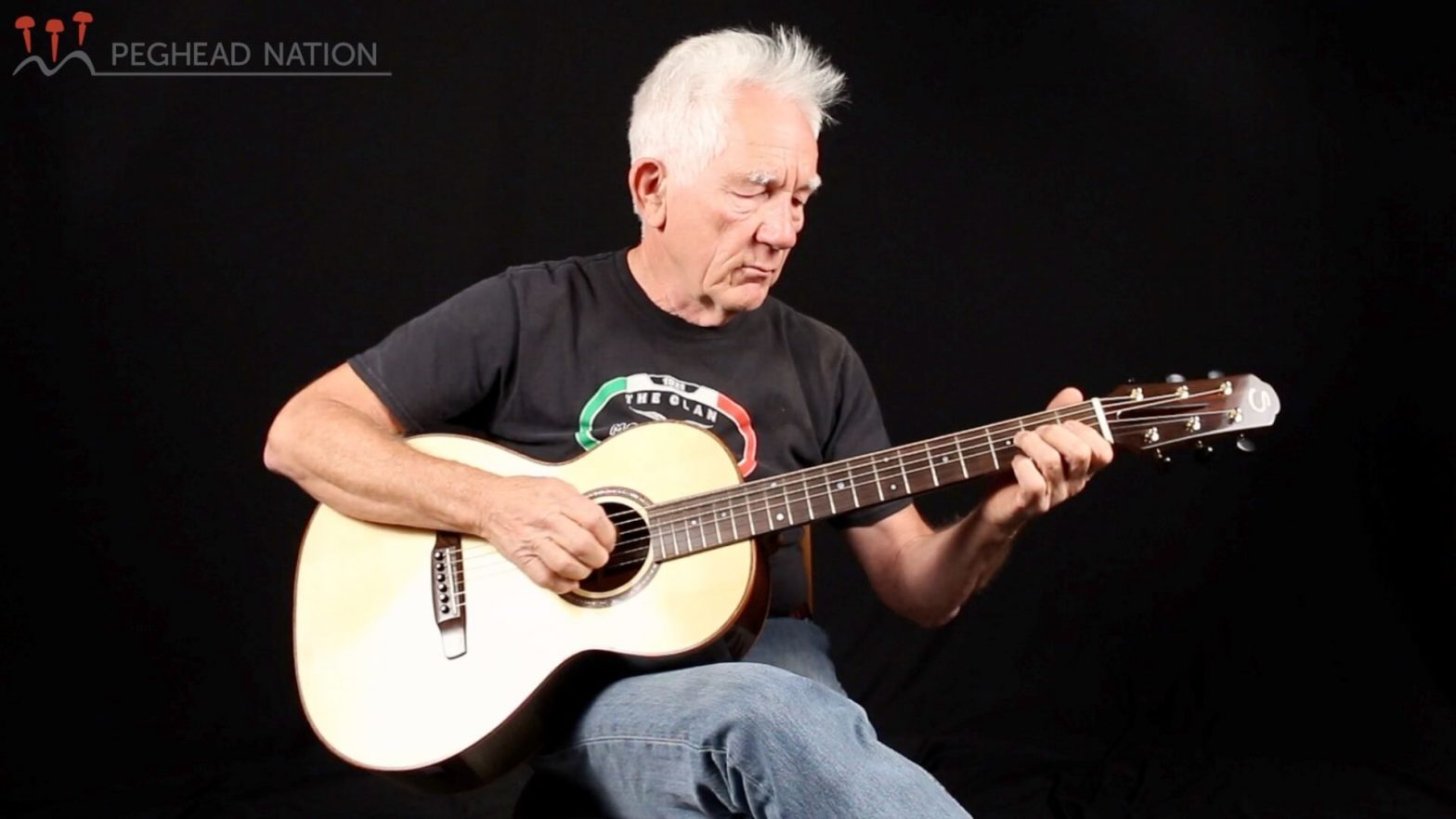 |
Sexauer FT-00-CNLuthier Bruce Sexauer shows his “Couch Noodler” flattop. Read More |
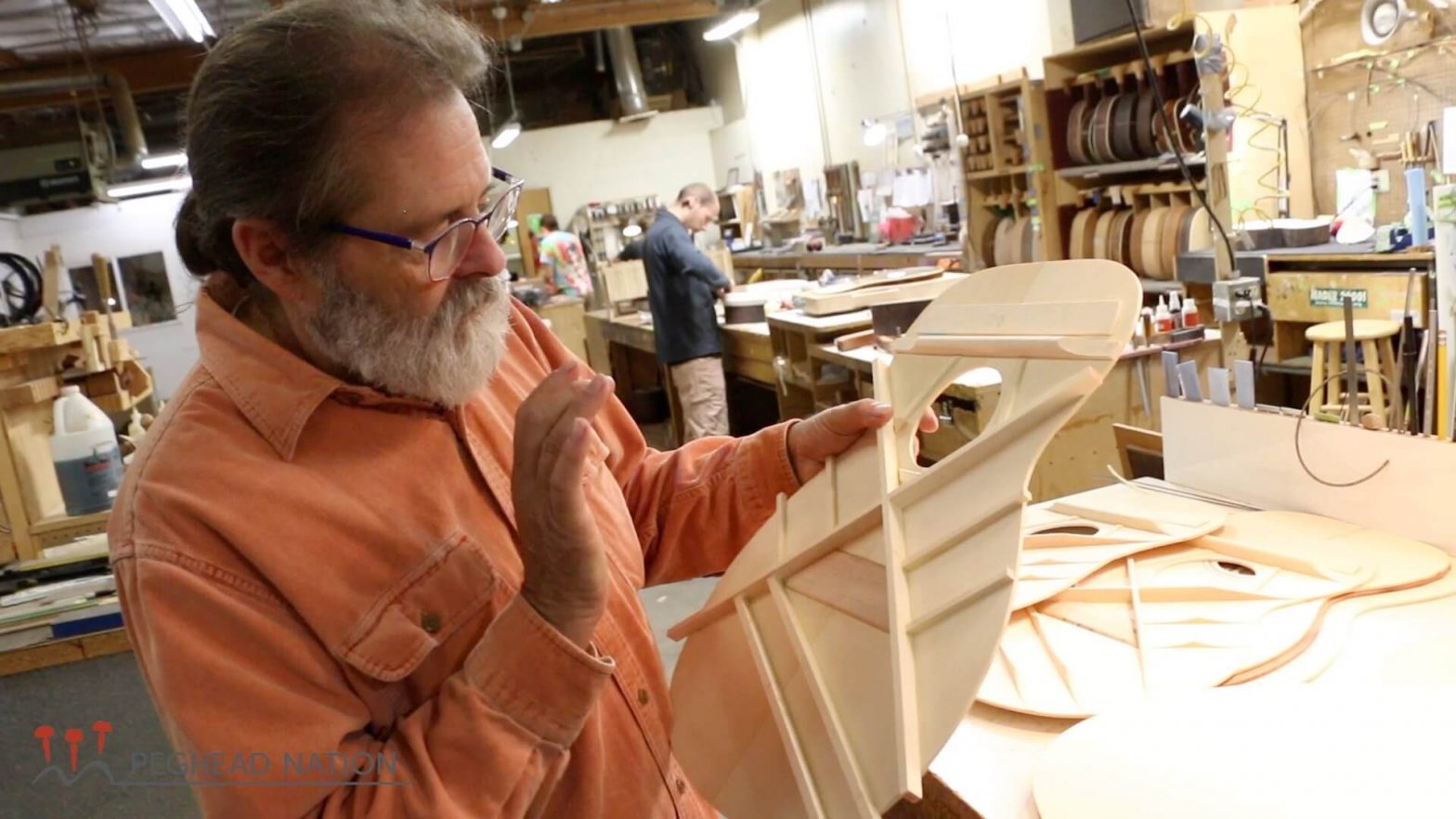 |
Santa Cruz Guitar Company Shop VisitSanta Cruz co-founder Richard Hoover discusses the company’s approach to building a custom instrument. Read More |
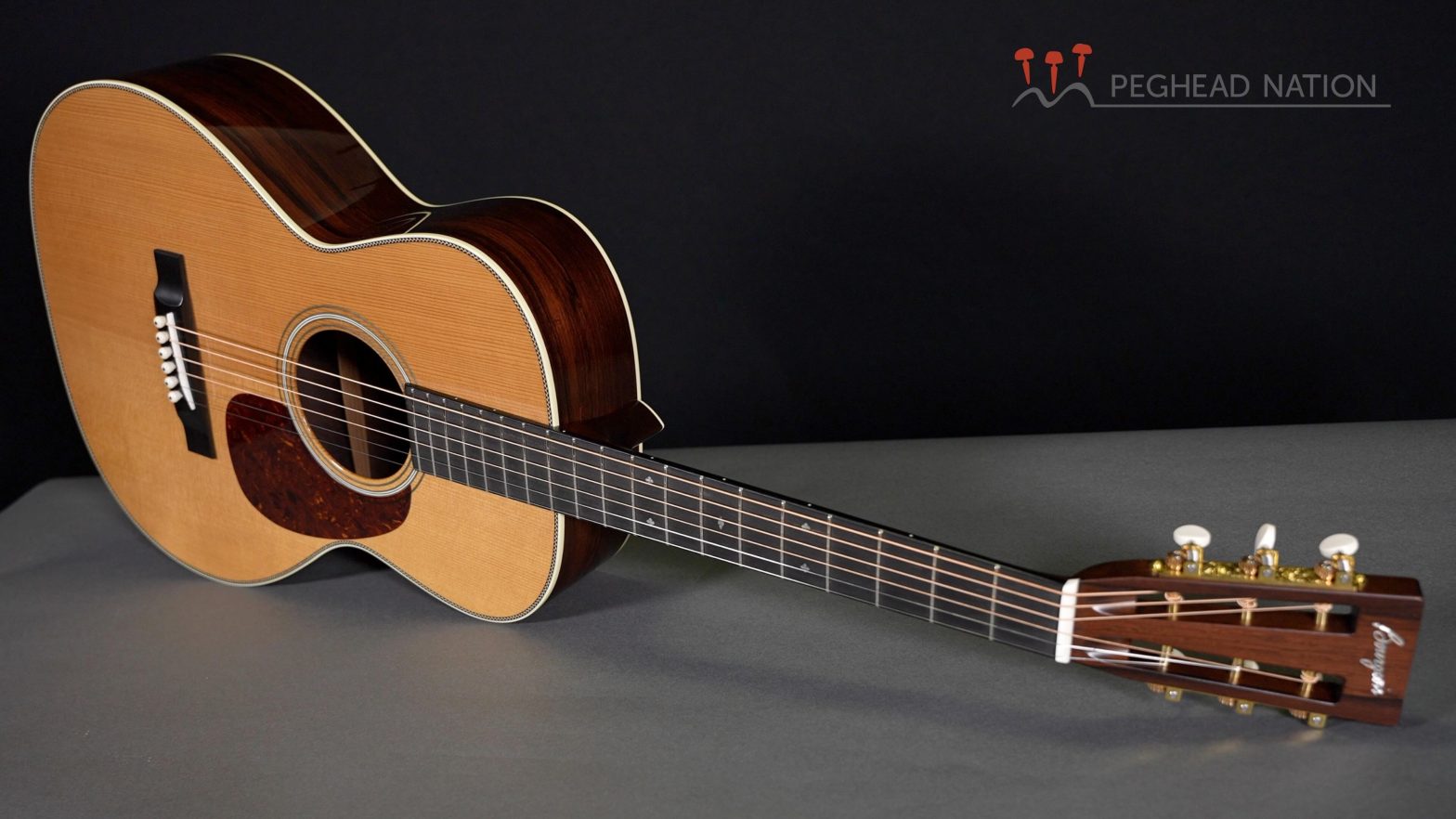 |
Bourgeois Vintage Heirloom L-12/S Limited EditionA fabulous 12-fret 00 with Madagascar rosewood back and sides. Read More |
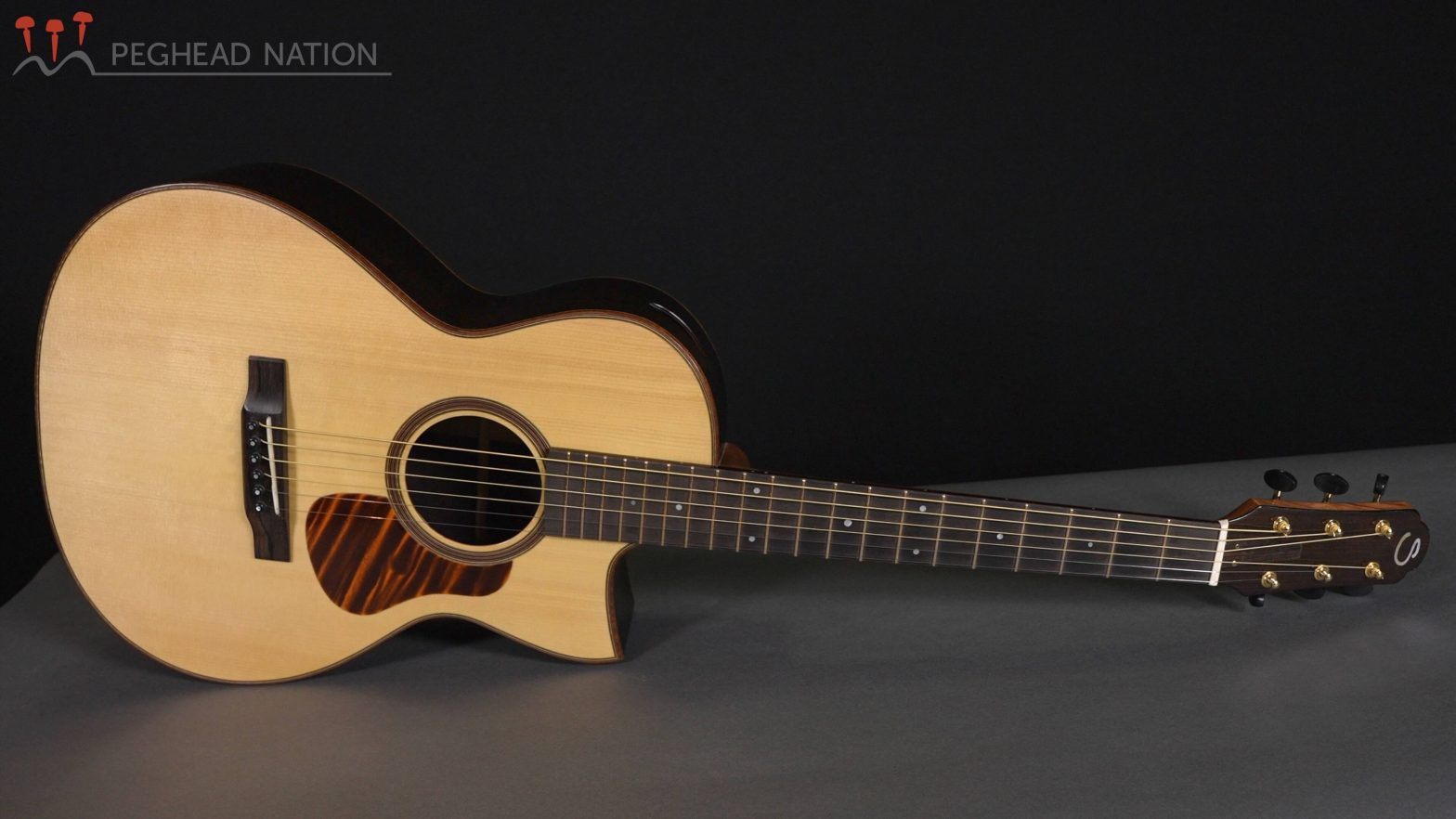 |
Sexauer FT-L00-CA fabulous Brazilian rosewood small-body flattop. Read More |
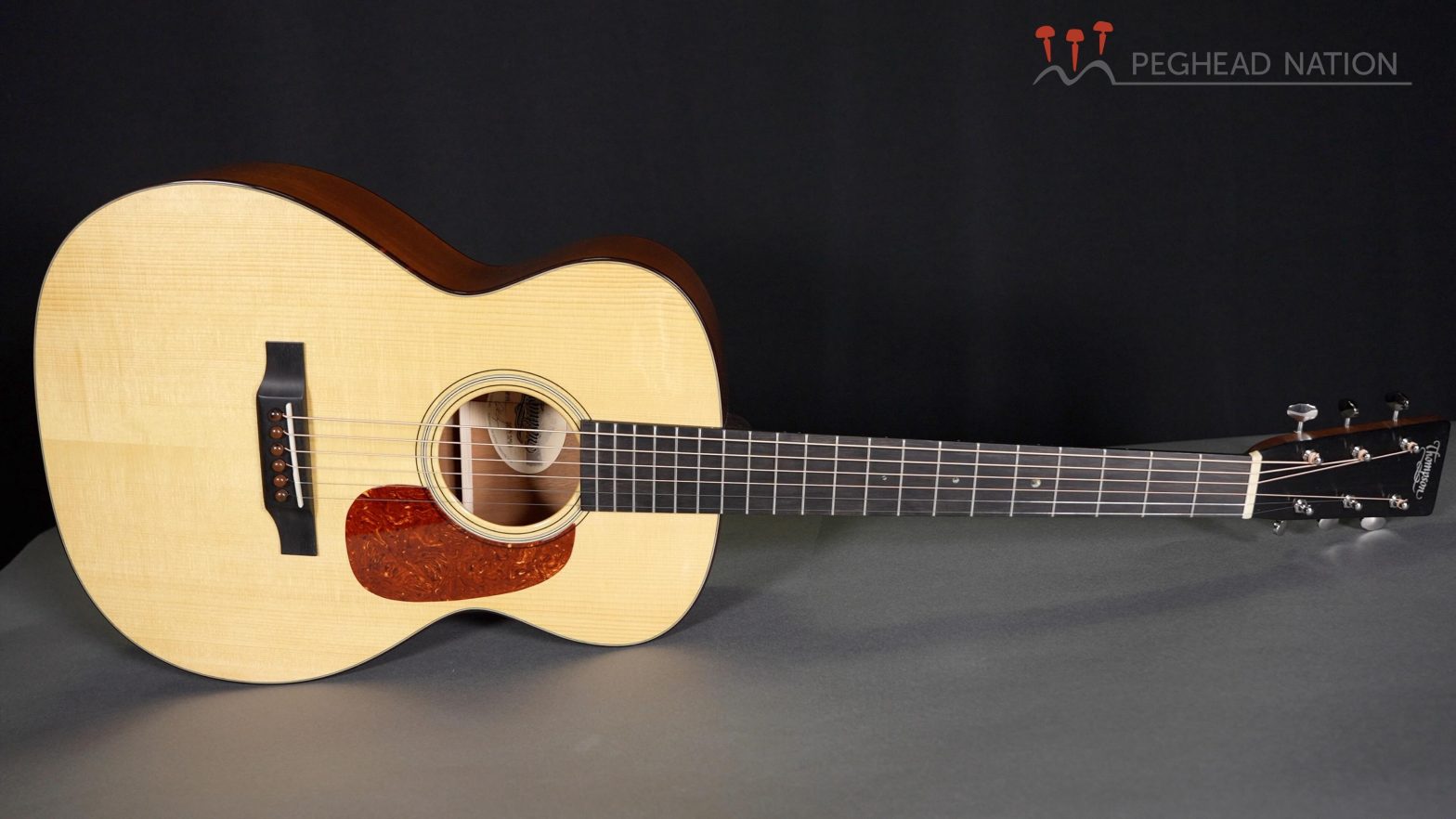 |
Thompson 00-14SMAA no-frills 00 that meets high expectations. Read More |
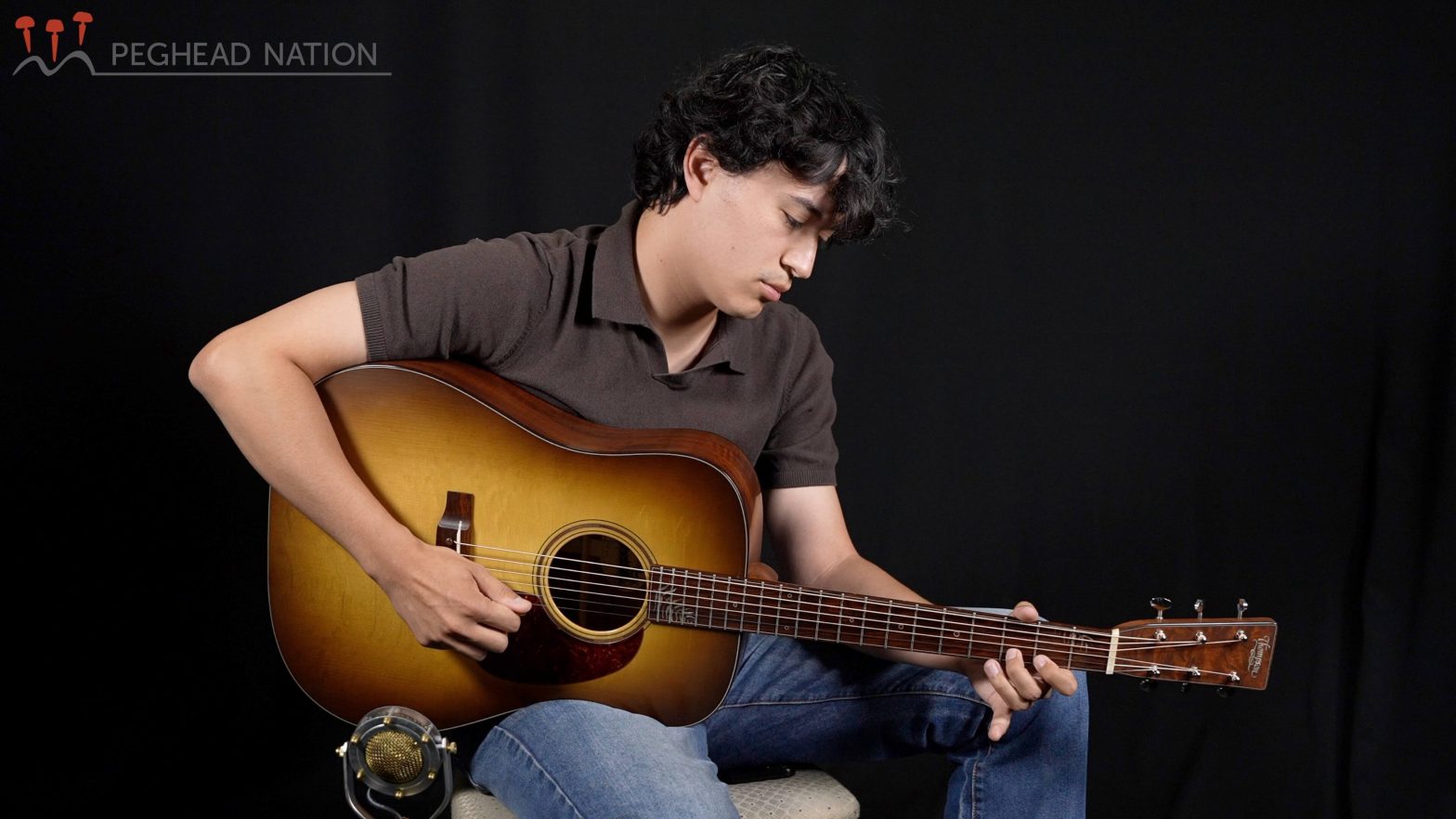 |
Thompson Molly Tuttle Signature ModelA slightly customized version of the contemporary flatpicking star’s dreadnought. Read More |
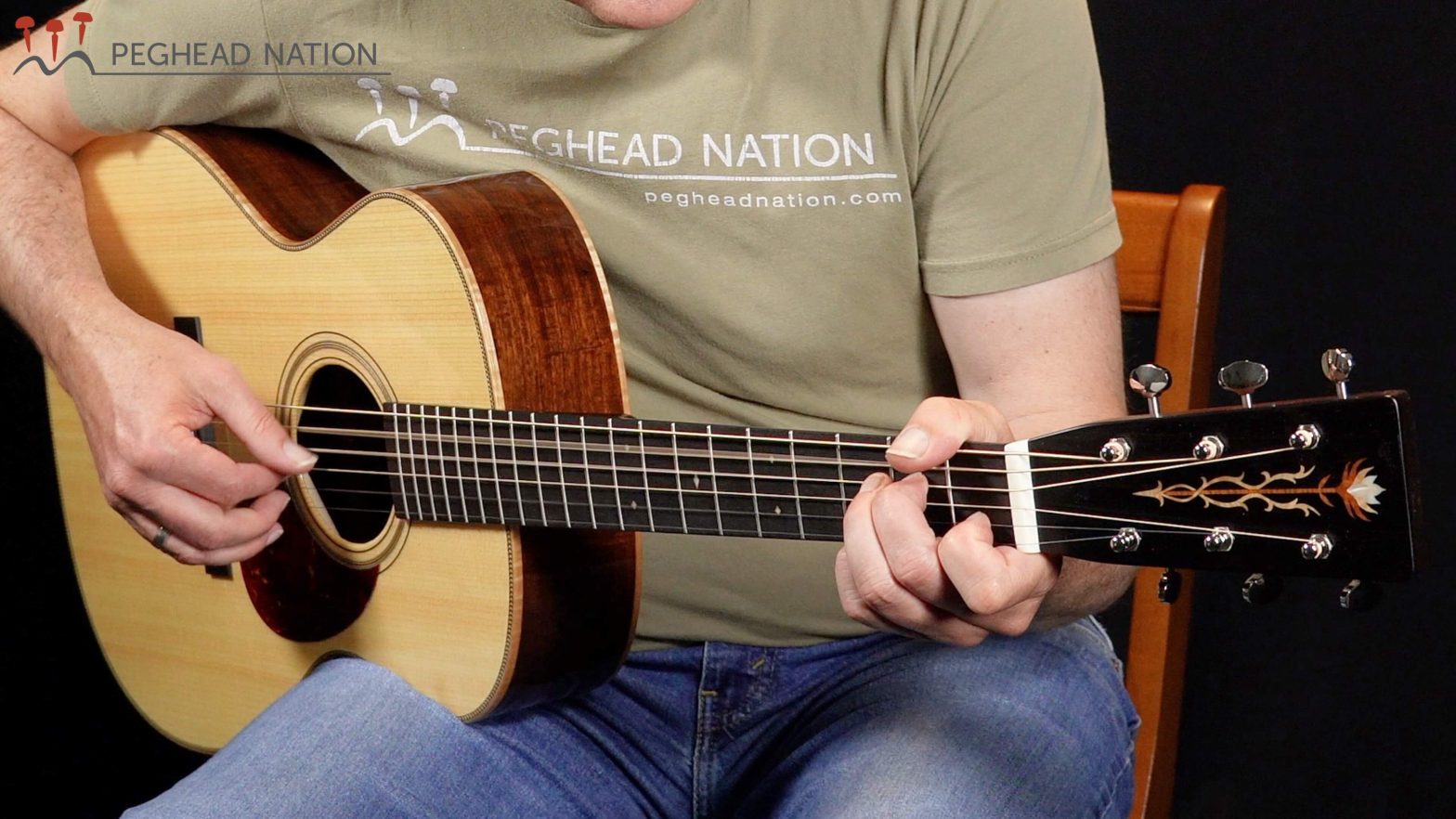 |
Preston Thompson OM-GLA wonderful orchestra model built with granadillo back and sides and a Lutz spruce top. Read More |
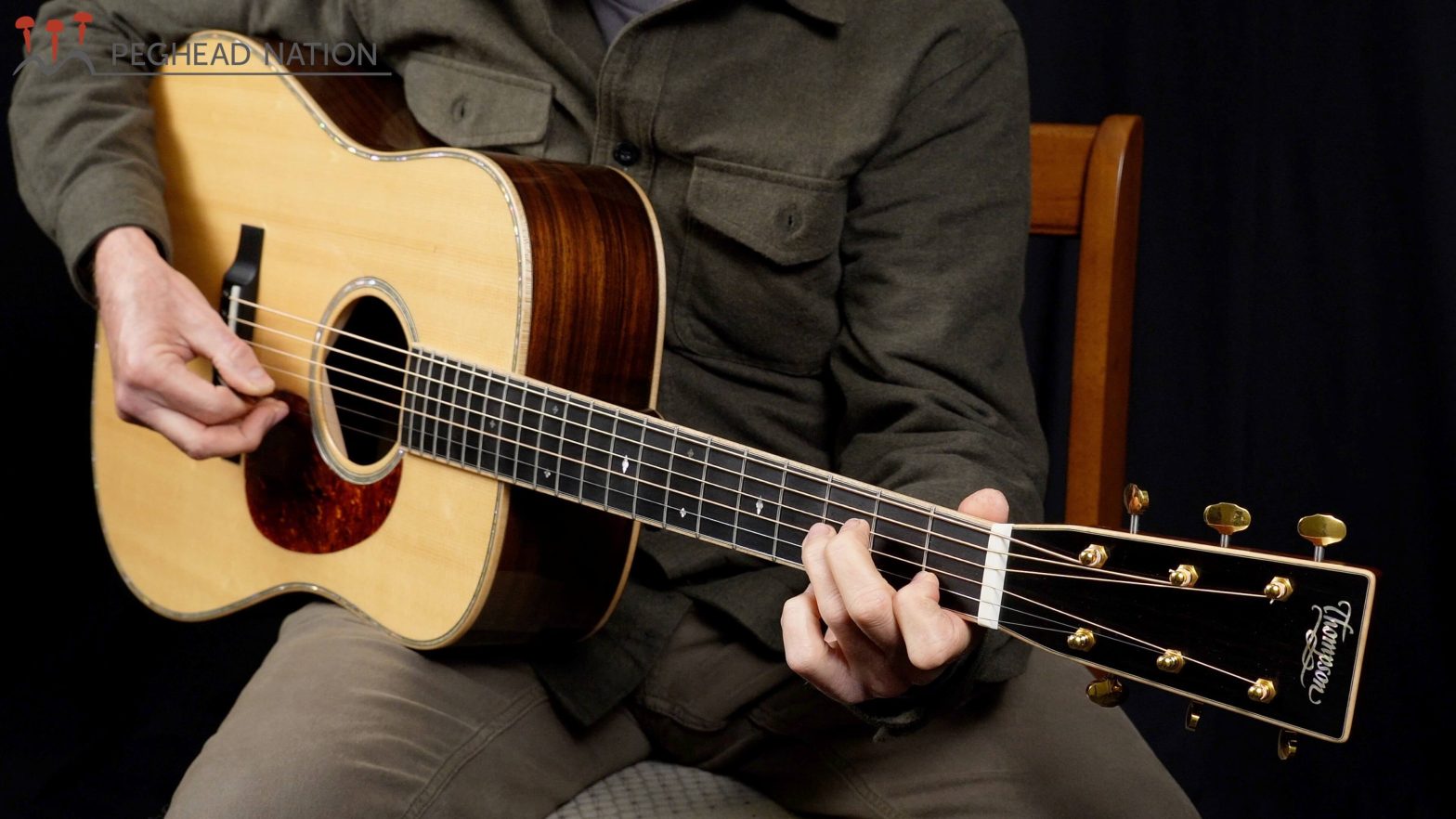 |
Preston Thompson PKTA limited edition re-creation of a special Thompson dreadnought. Read More |
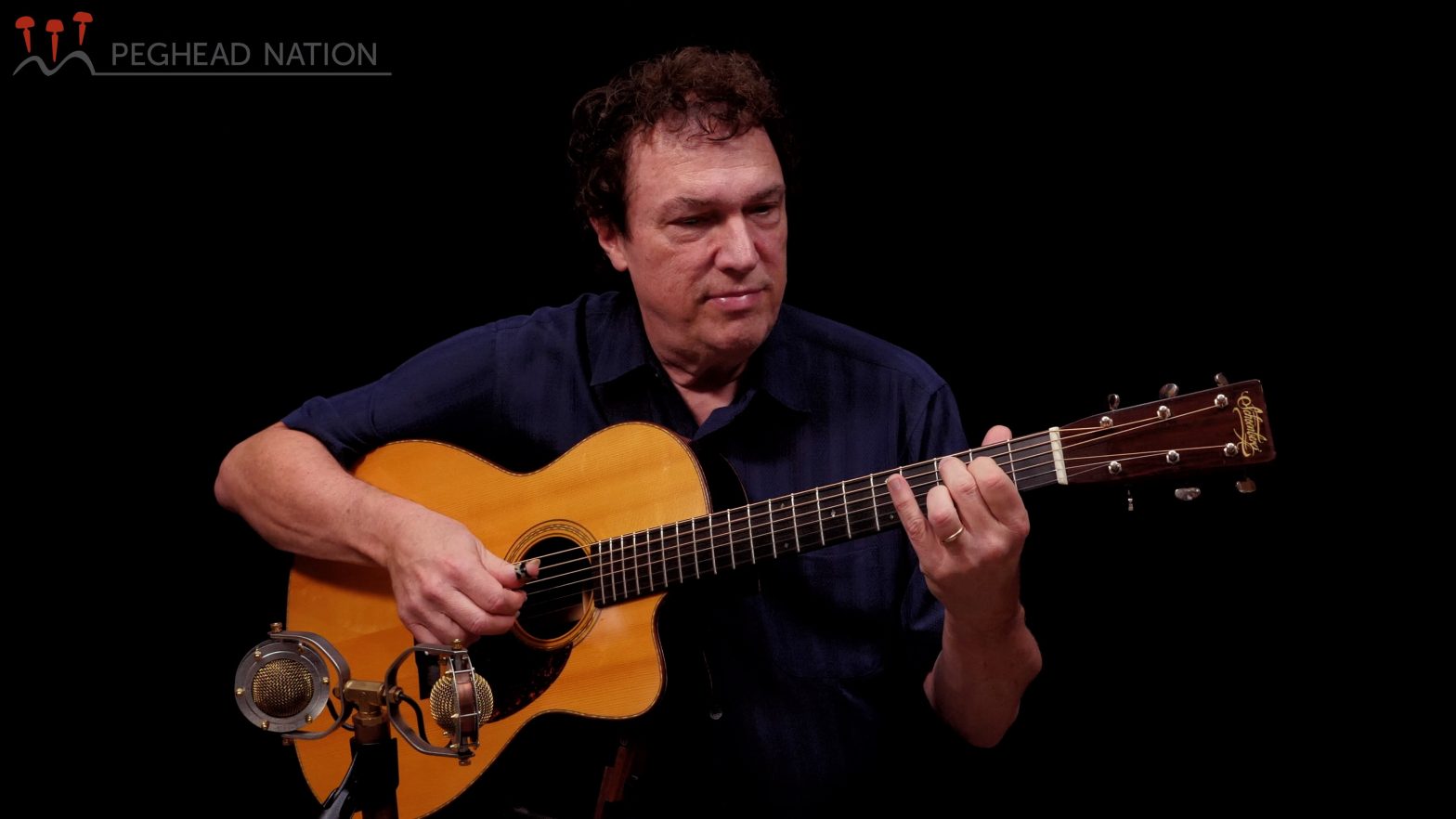 |
2005 Schoenberg 000 CutawayPeghead Nation instructor Doug Young demonstrates his Bruce Sexauer-built 12-fret 000. Read More |
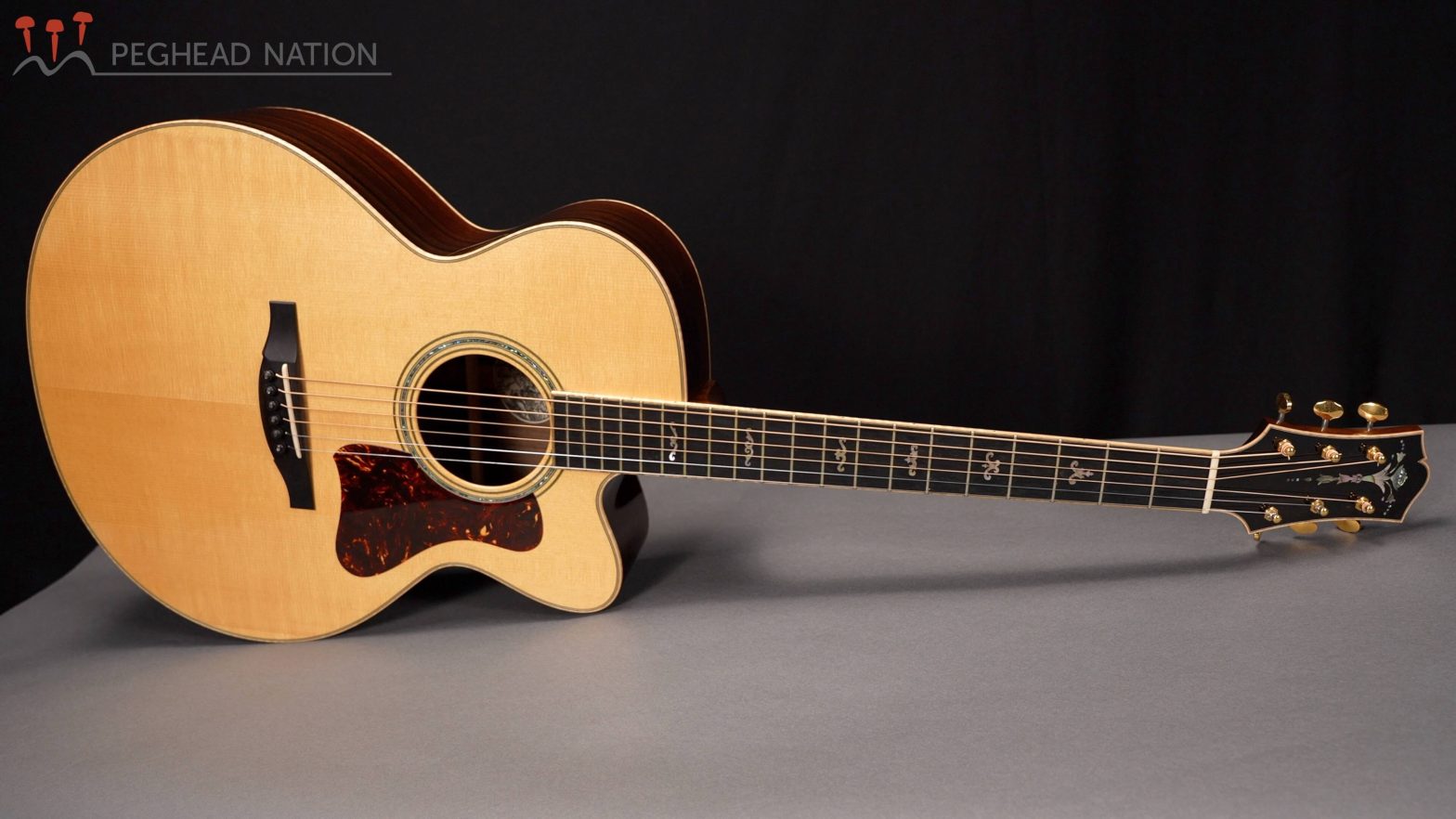 |
2012 Collings SJ Indian CustomA slightly modified example of Collings’ popular small jumbo model. Read More |


